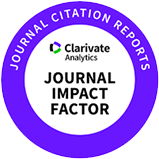Characteristics between porcine bone marrow-derived mesenchymal stem and peripheral blood mononuclear cells
Abstract
Mesenchymal stem cells (MSCs) have been isolated from various organs and extensively studied for their potential in regulating transplantation. MSCs from different mammalian species are well characterized; however, the properties and therapeutic potential of porcine bone marrow-derived MSCs (BM-MSCs) remain unclear. In this study, we aimed to profile the characteristics of porcine BM-MSCs by comparing their gene expression patterns and immunomodulatory properties with those of porcine peripheral blood mononuclear cells (PBMCs) and bone marrow-attached cells (BMACs). Using quantitative polymerase chain reaction, flow cytometry, immunocytochemistry, and RNA sequencing, we confirmed the expression of key MSC markers, including CD105, CD73, and CD90, in porcine BM-MSCs, and aligned them closely with human MSCs. We found significant differences in gene expression between BM-MSCs and PBMCs, with BM-MSCs exhibiting a distinct expression pattern similar to that of BMACs. Gene ontology enrichment analysis revealed the pathways involved in immune modulation and tissue repair, underscoring the potential of BM-MSCs to enhance immune regulation. Notably, BM-MSCs exhibited higher transforming growth factor-beta levels than PBMCs, suggesting a central role in their immunosuppressive function. These findings indicate the immunomodulatory capabilities of porcine BM-MSCs and support their application in xenotransplantation, where they may help mitigate graft rejection and promote tissue regeneration.
















